Jim Chapman grabs the chance for an extra hunting trip while stateside
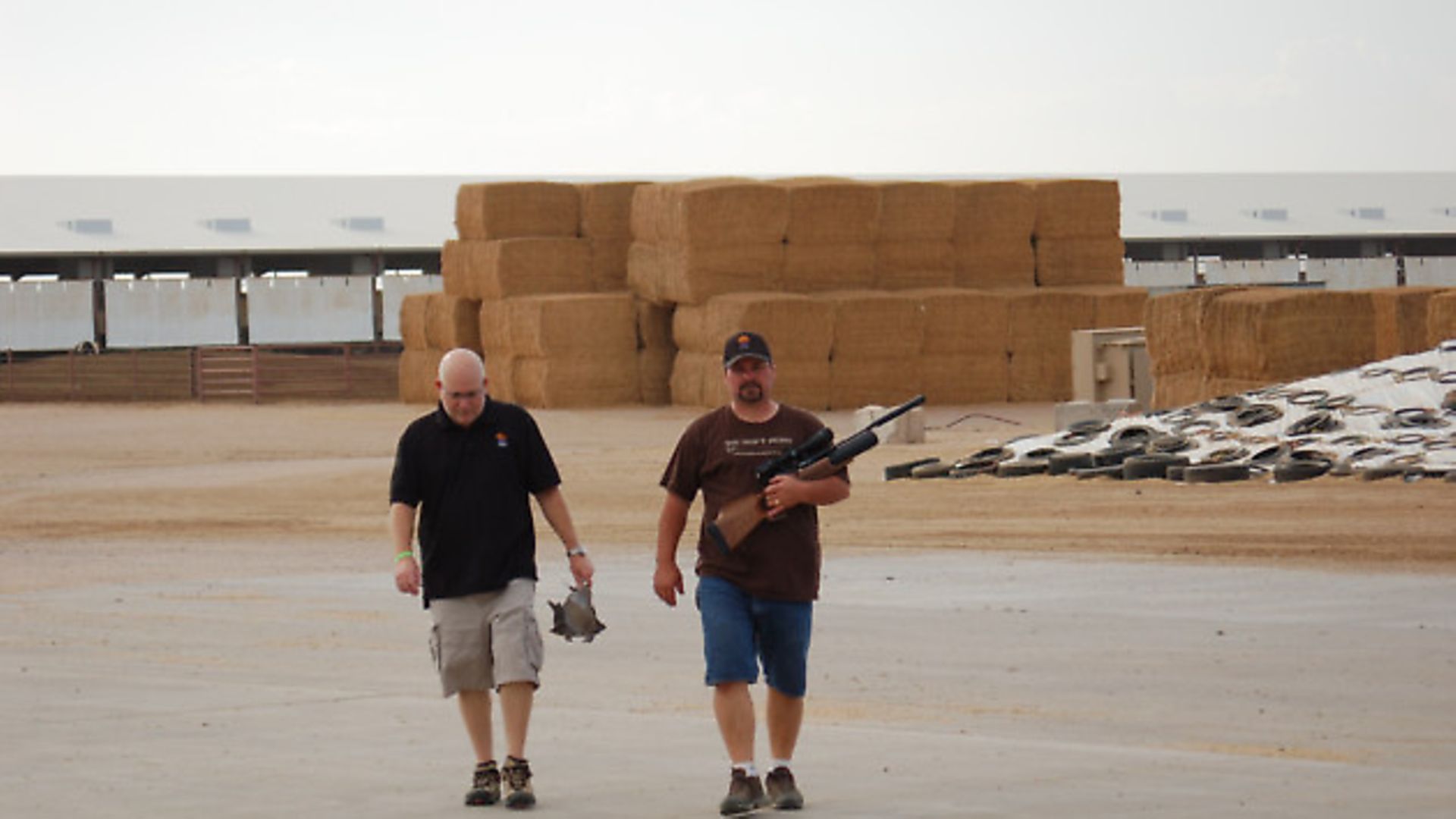 credit: Archant
credit: Archant
At the end of a trip to Arizona for business, I got a last-minute chance to delay my flight and head out with my buddies at Airguns of Arizona (AOA).
I rang up owner Robert Buchanan and we arranged to have lunch and take a look at some newly arrived guns. I then spoke to Kip Perow, AOA’s resident hunting guru, and we made plans to hook up early the next morning for a pest shoot at a local dairy farm. Kip would take care of outfitting me – the only thing I needed to do was be at the shop at 6am. I changed my flights and hit the sack early.
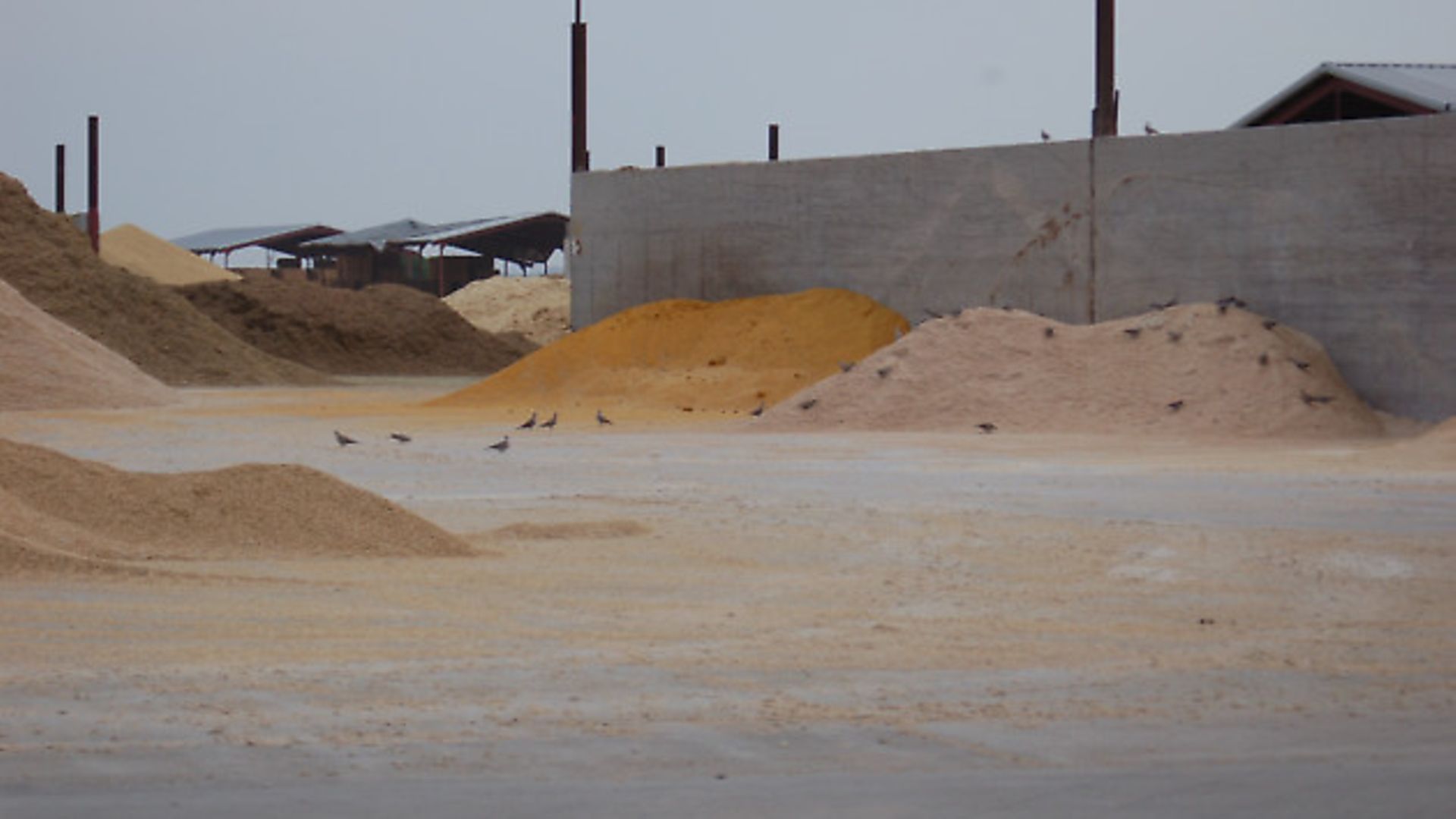 credit: Archant
credit: Archant
I rolled up to the shop at sunrise, and was greeted not only by Kip but Robert as well. He wasn’t going to let us have all the fun! The three of us loaded up the gear and hit the road for the 40-minute drive to the dairy farm, the largest in the state. Kip and I have shot here before, it is much busier and more industrialized than most of the other farms where I hunt.
The layout doesn’t offer many places to hide, but the pigeons are accustomed to people so long as they keep their distance. Their tolerance seems to be set at about 60 yards – anything closer and they take off.
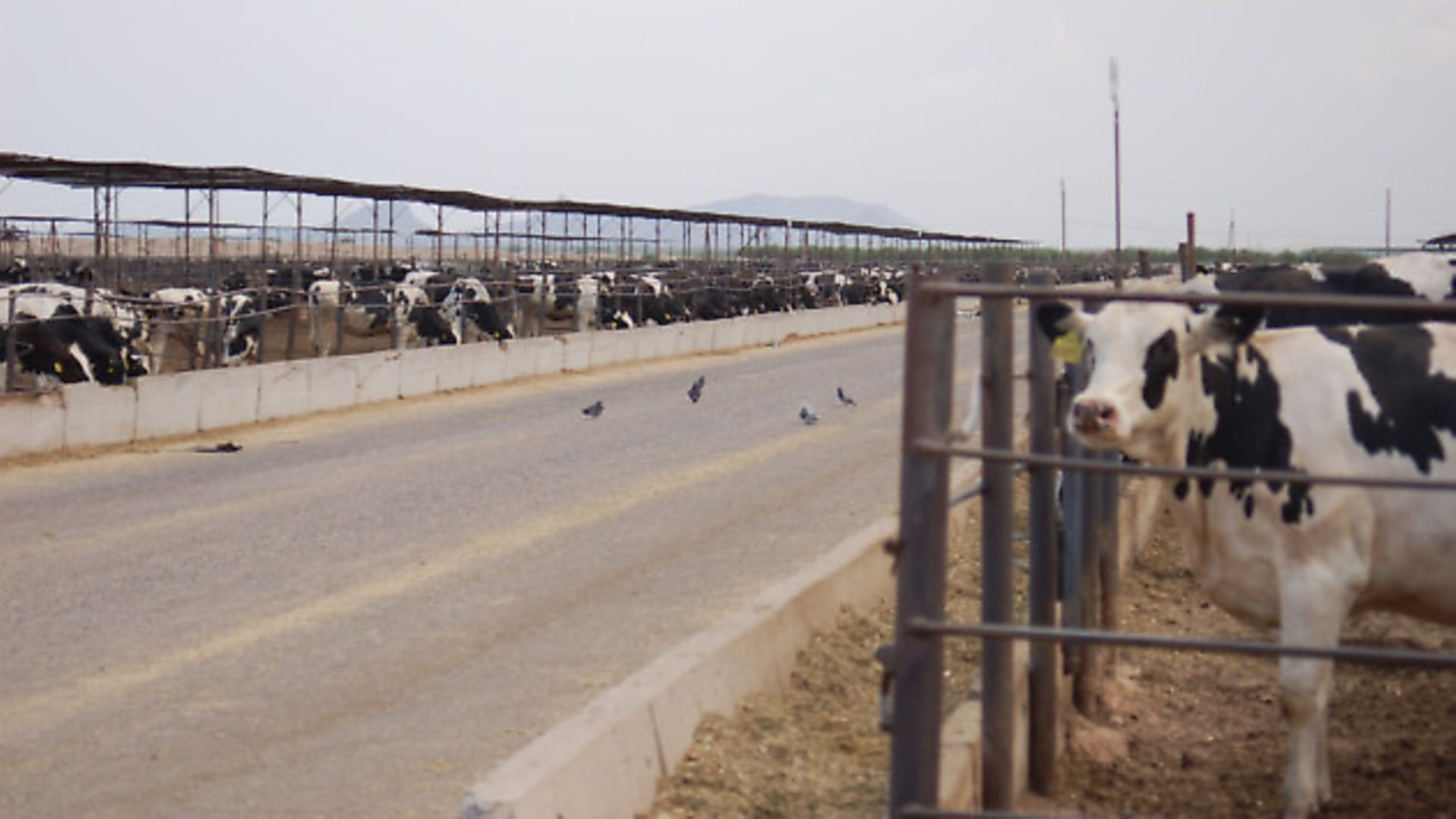 credit: Archant
credit: Archant
Lots of birds could be seen, mostly pigeons, with a few Eurasian collared doves in the mix. It’s still a mystery to me why at some of the dairies it will be almost all feral pigeons, while at the next you’ll only see Eurasian doves.
The rifle Kip packed for me is one I’ve shot before and, to be honest, covet. It was his personal Daystate Air Wolf in .25 calibre. This gun is generating 45 ft.lbs., could knock the antennae off a gnat at 75 yards, and is mechanical perfection dressed in a handpicked walnut stock.
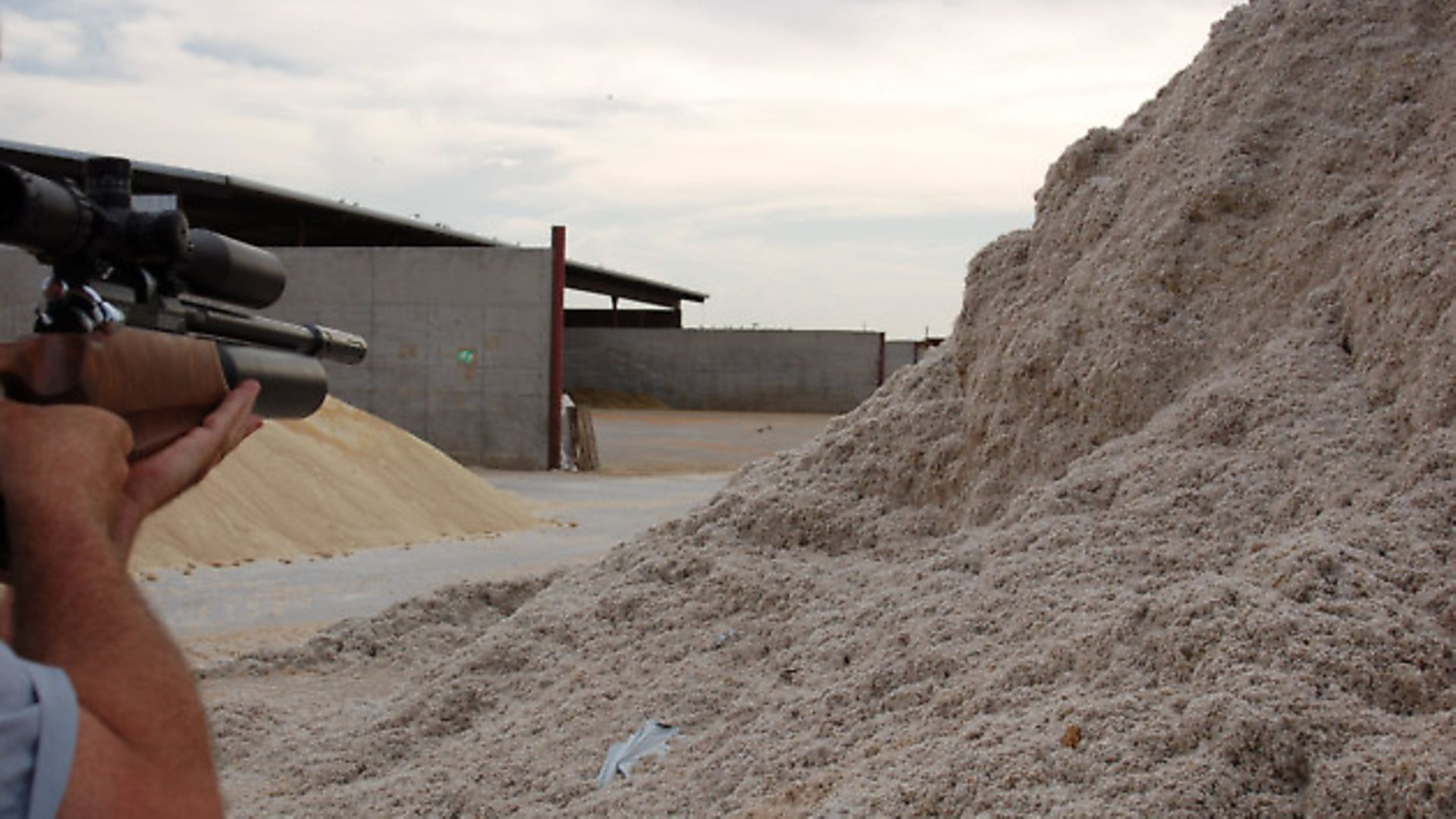 credit: Archant
credit: Archant
For pellets I used the JSB 25.3 grain Exacts, the preferred fodder for this rifle that offers great terminal performance.
I’ve been asked why we use high-power guns when hunting lighter-bodied quarry. It isn’t because high power is required to kill small game cleanly, but rather that we often shoot at ranges out to 100 yards or further. I like to get in close to my quarry usually, but for some species and situations, the longer shot is more practical.
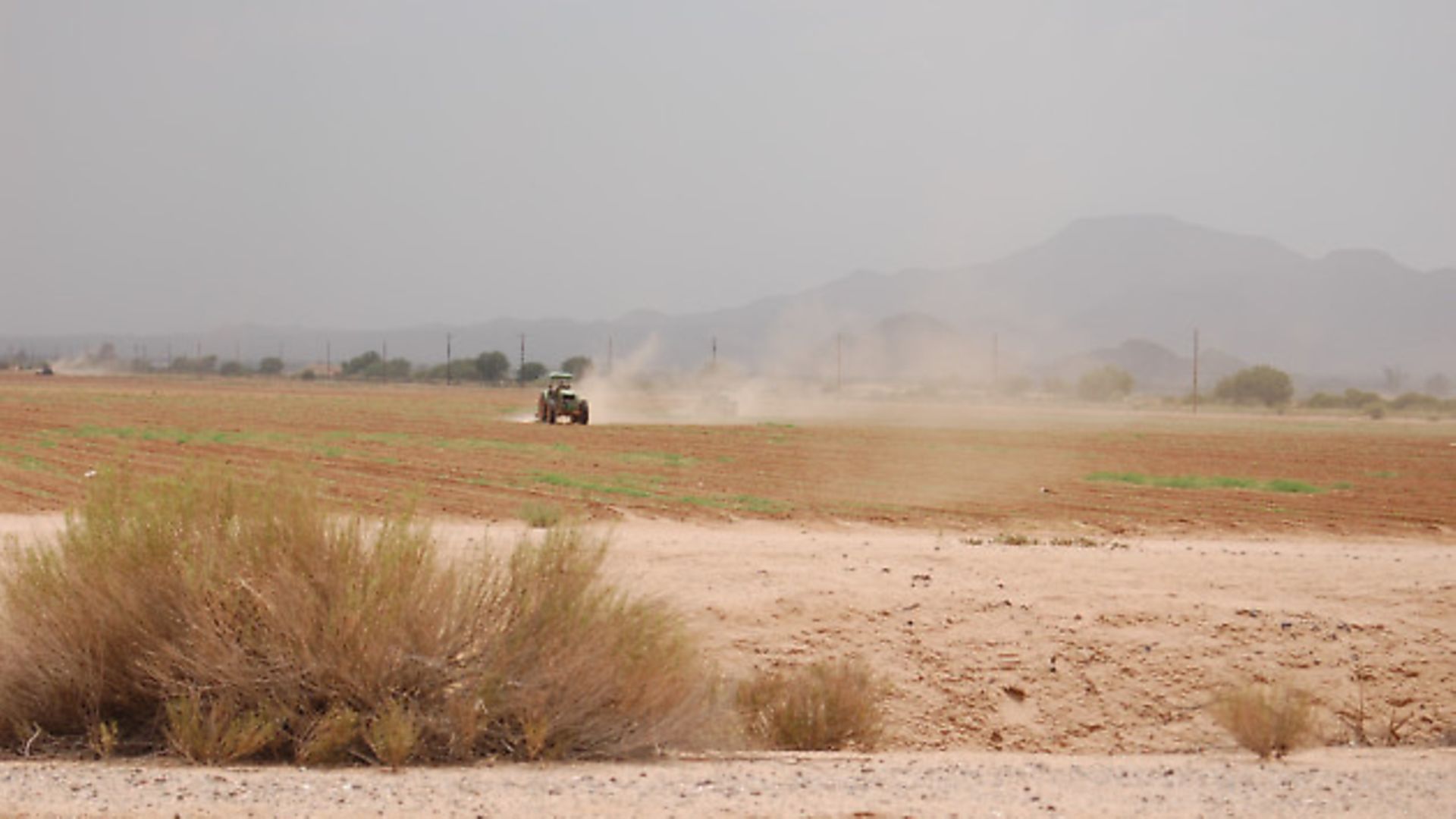 credit: Archant
credit: Archant
When you have a heavy, .25 pellet travelling at over 900 fps, it flattens the trajectory as a result of the retained (high) velocity along its path of flight. Further, these heavy and fast-moving pellets are less susceptible to wind. The last point is when taking longer shots at birds, a combination of head movement and time of flight can make headshots sketchy, making body shots a better option. A heavy, large calibre produces a substantial impact that ensures a clean kill with a little more latitude in placement.
After arriving at the dairy, we went out on foot. It was already 90 degrees in the shade. As we worked our way along the outbuildings and feed bins, we found pigeons on the ground, on wires, the roof and lined up on the fences. Not the hundreds of birds we sometimes saw, but groups of 15-25 birds everywhere we looked and true to form, they had zero tolerance for us getting inside of their safety zone.
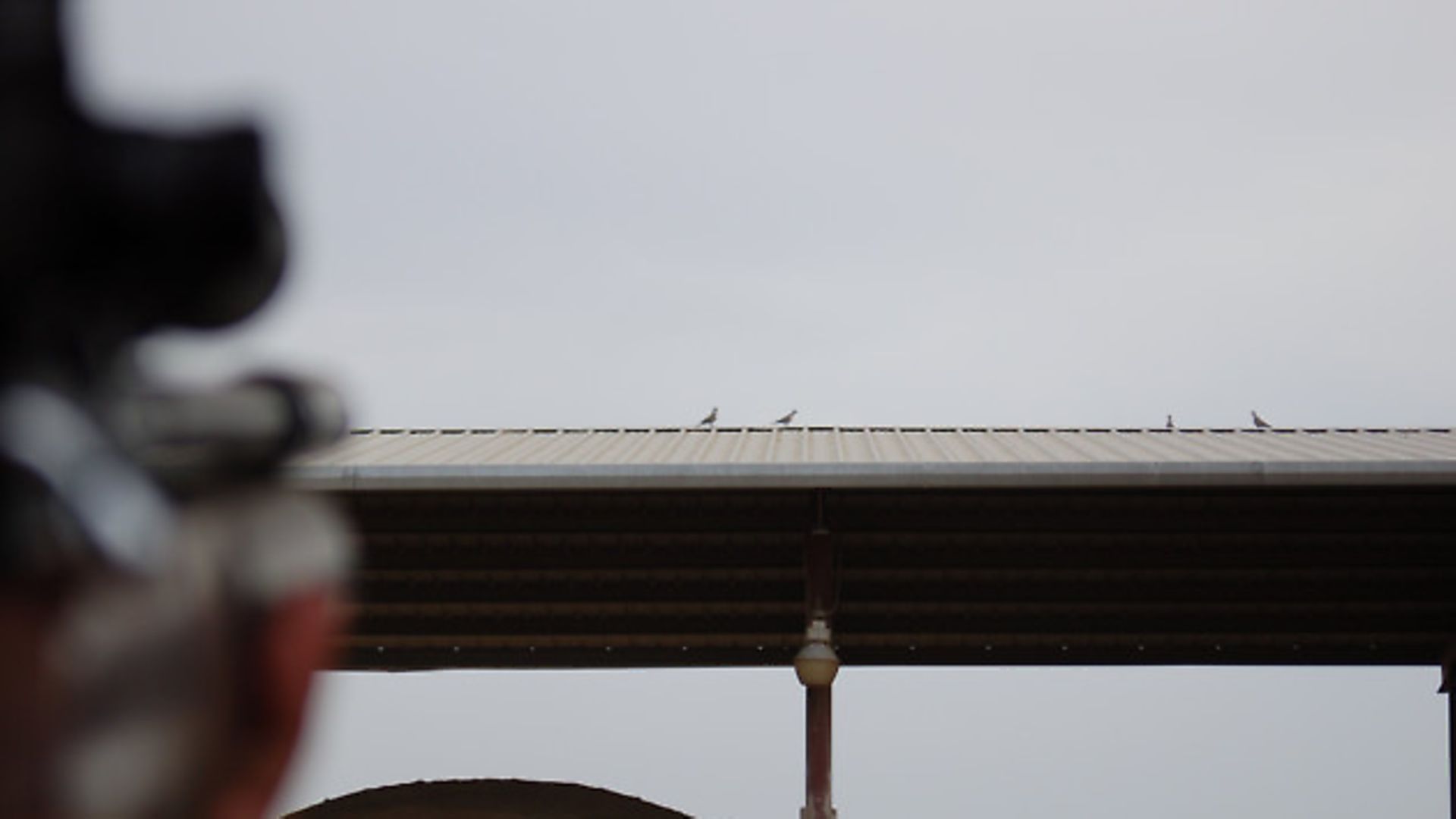 credit: Archant
credit: Archant
We didn’t carry shooting sticks, opting to either shoot off-hand or using nearby structures as makeshift rests. I consider myself a decent off-hand shot, but these two guys are outstanding. I tend to think of Robert primarily as a businessman, owning and running one of the largest, longest-established and best-stocked airgun retail and distribution operations in the country. It was his passion for airguns and airgun hunting, however, that got him started and when I see him out shooting, his love for the sport is obvious.
I slowly peeked around a corner of a shed and saw about 20 pigeons spread out on the side of a grain pile, feeding and unaware of my approach. I leaned against the wall and braced myself, squeezing off the shot. The first bird slumped over as the rest of the flock jumped up and settled down again.
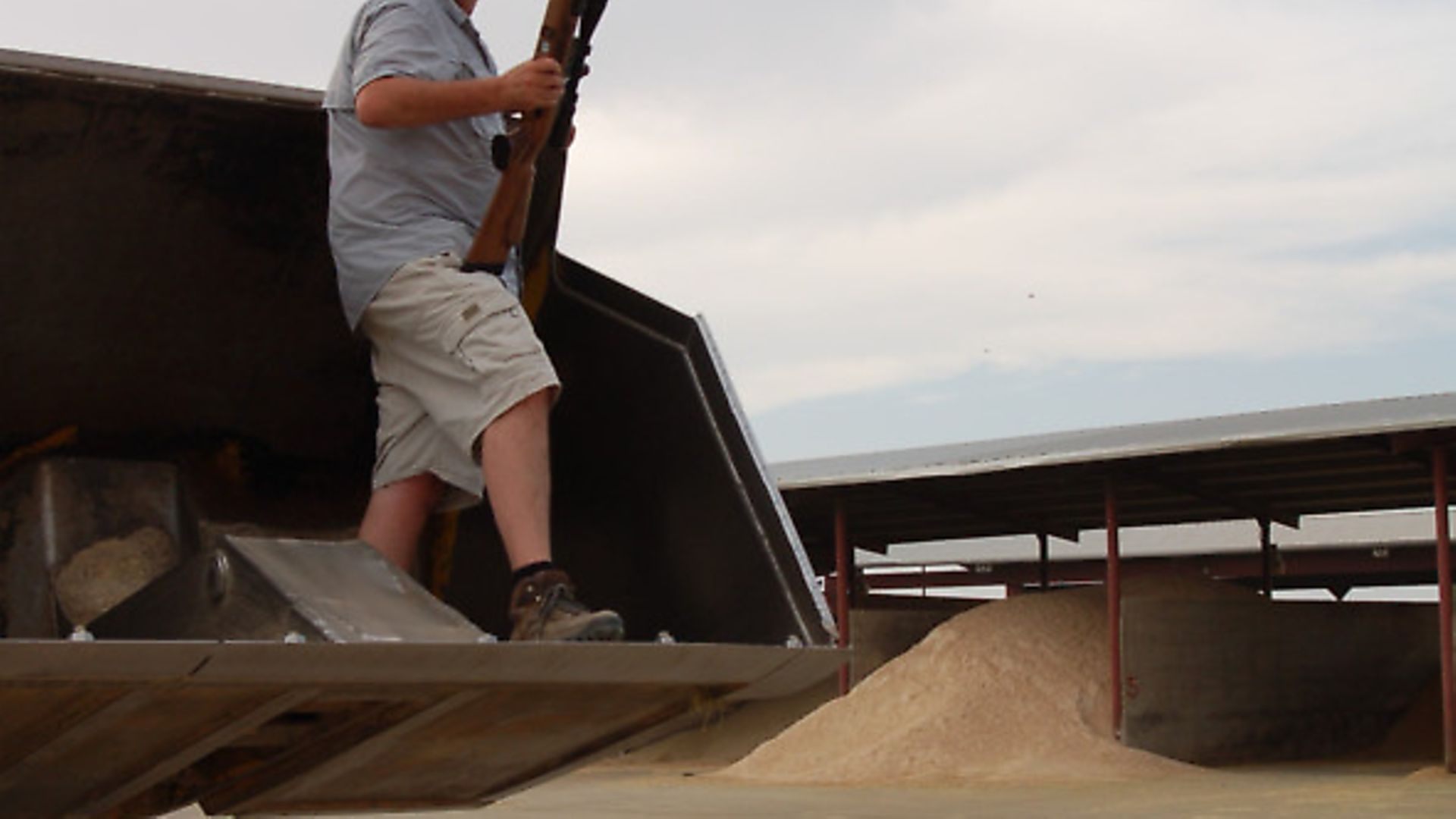 credit: Archant
credit: Archant
Thwack! The second bird rolled over and this time his flock mates took off, some landing on a nearby metal roof. I heard a muffled report from the .25 calibre FX Royale Kip was shooting, as he took the off-hand shoot and watched the bird tumble off the roof.
A little further on, Robert dropped to a knee and took another bird off a fence rail. We had to pass on many of these flying rats as they were sitting on fences and roofs without a safe backdrop behind them.
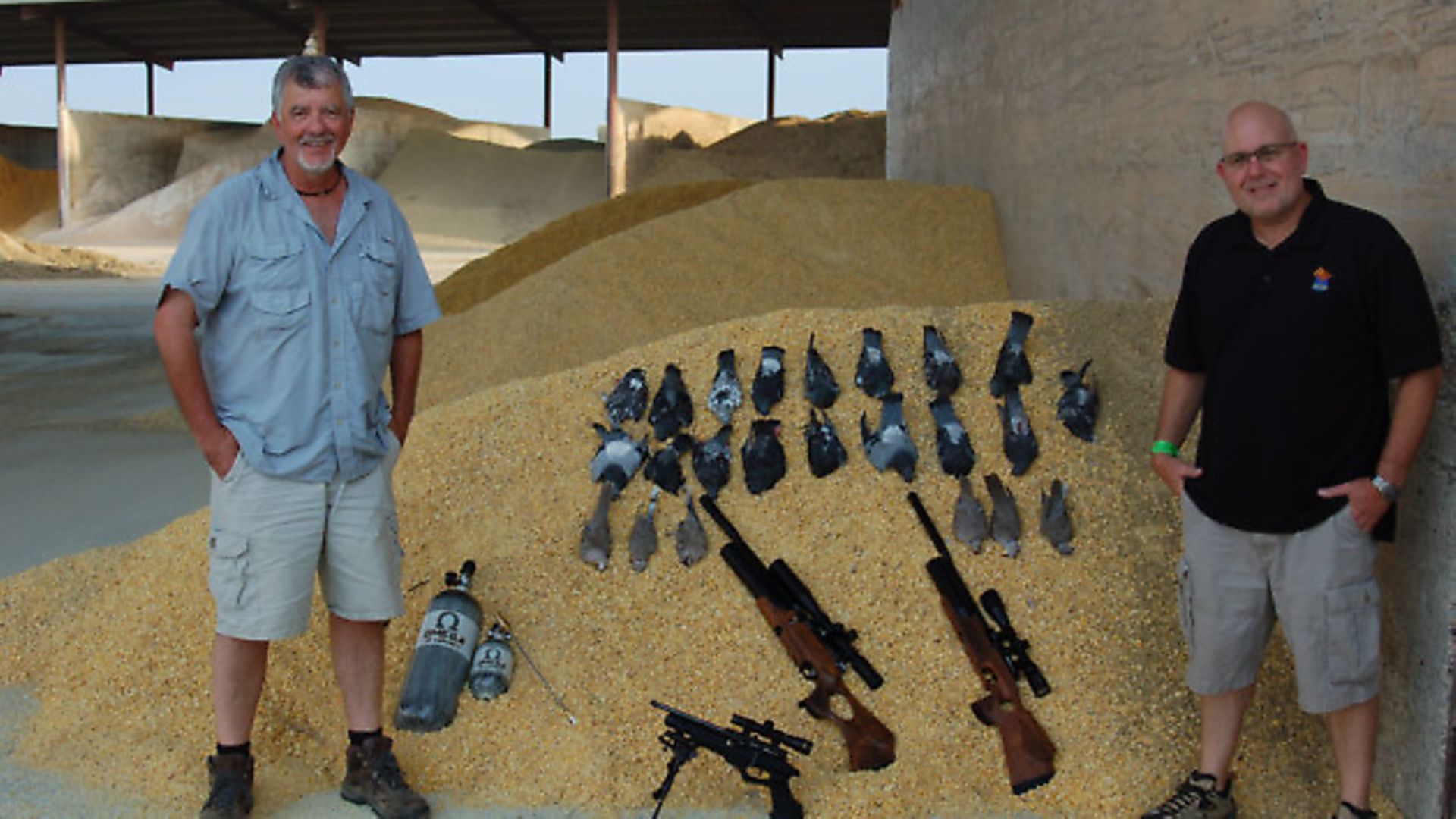 credit: Archant
credit: Archant
After a short break to rehydrate, Kip went back to the truck and swapped his rifle for an FX Ranchero handgun, set up to generate 22 ft.lbs and zeroed for 35 yards. I have seen him put 10 consecutive shots into half an inch at 40 yards with this handgun, and he used it to good effect, dumping pigeon after pigeon from the barn rafters.
We kept shooting until noon, making a good show of it. I didn’t keep count but we collected the carcasses several times and I would estimate at least 20 birds on each pass, sometime a few more.
This is one of those settings where airguns are the most practical tool for the job. They are accurate, generate much lower energy levels than our .22 rimfires and the shrouded barrels make them so quiet we don’t disturb the livestock or staff.
While some birds were dropped with head shots, the majority fell to well-placed body shots. With a high-power gun, a medium to heavy weight, round nose pellet, and the right shot placement, this is an efficient, effective and ethical kill zone for the pest-control shooter.
After loading up our gear, we made our way to a local Mexican restaurant, one of the authentic kitchens you only find in our south-western border states. We filled up on chilli rellenos, empanadas, tamales and tortilla chips soaked in fiery salsa, chugged a couple ice-cold drinks. Well fed and just a tad sunburned, we headed off for phase two of my play date – the AOA store!
___________________
You may also like:
Hunting journal: Woodland stalking
Rosie’s Recipe: pigeon sandwich
Hunting journal: horses, bunnies and a Scorpion